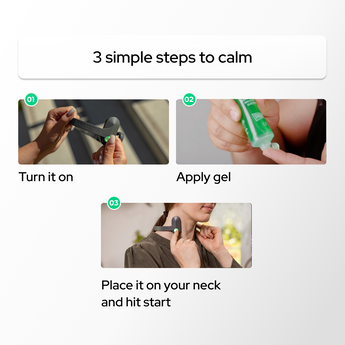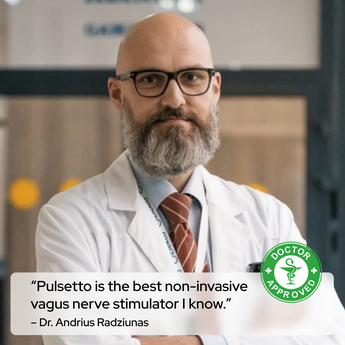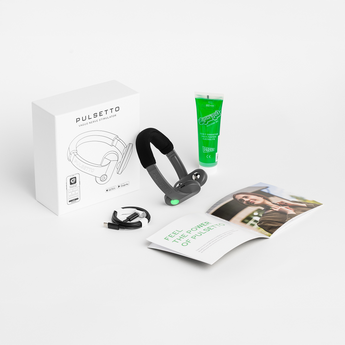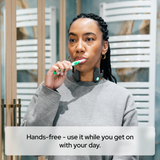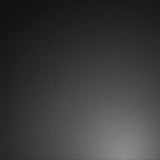Understanding ADHD: Symptoms and Diagnosis
Overview of ADHD and its symptoms
Attention Deficit Hyperactivity Disorder, or ADHD, is a neurological condition that manifests through symptoms of inattention, hyperactivity, and impulsivity. These symptoms can interfere with daily activities and affect academic, occupational, and social functioning. Common signs of ADHD include difficulty staying focused, forgetfulness, excessive talking, and fidgeting.
Different types of ADHD: inattentive, hyperactive-impulsive, and combined
ADHD is categorized into three types:
-
Inattentive Type: Characterized by difficulty sustaining attention, being easily distracted, and often losing things.
-
Hyperactive-Impulsive Type: Marked by excessive fidgeting, inability to stay seated, and impulsive actions without considering consequences.
-
Combined Type: Features symptoms of both inattention and hyperactivity-impulsivity.
Diagnosis criteria and challenges in identifying ADHD
Diagnosing ADHD involves a comprehensive evaluation that includes clinical interviews, behavior rating scales, and observation. One of the main challenges in diagnosing ADHD is that its symptoms can overlap with other conditions, such as anxiety or learning disabilities. Therefore, a thorough assessment by a healthcare professional is crucial to ensure an accurate diagnosis.

Those with ADHD struggle to sustain their attention and focus.
The Vagus Nerve and Its Functions
The vagus nerve, also known as the "wandering nerve", is a crucial part of the autonomic nervous system. It extends from the brainstem down to the abdomen, connecting various organs and playing a vital role in regulating bodily functions.
Anatomy and role of the vagus nerve in the autonomic nervous system
The vagus nerve is the longest cranial nerve, and it has both sensory and motor functions. It is a key component of the parasympathetic nervous system, which promotes relaxation and rest. By stimulating the vagus nerve, we can influence various bodily functions, including heart rate, digestion, and mood regulation.
Connection between the vagus nerve and cognitive functions
The vagus nerve's influence extends to the brain, where it impacts cognitive functions such as attention, memory, and emotional regulation. By modulating neurotransmitter levels and brain activity, VNS can potentially improve focus and reduce hyperactivity in individuals with ADHD.
The vagus nerve's influence on mood and attention
Besides cognitive functions, the vagus nerve also plays a significant role in mood regulation. It helps control the release of stress hormones and promotes a sense of calm. By stimulating the vagus nerve, we can enhance mood stability and attention, which are often disrupted in individuals with ADHD.

An illustration of the vagus nerve—the longest and most complex cranial nerve.
Mechanisms of Action for VNS
Vagus nerve stimulation works by sending electrical impulses to the vagus nerve, which then carries these signals to the brain. These impulses can alter brain activity and neurotransmitter levels, providing therapeutic benefits for various conditions.
Invasive vs. non-invasive VNS devices
There are two main types of VNS devices: invasive and non-invasive. Invasive devices require surgical implantation, while non-invasive devices use external electrodes to deliver stimulation.
Wearable non-invasive VNS devices, in particular, are gaining popularity due to their ease of use and lower risk of complications.
How VNS affects brain activity and neurotransmitter levels
When the vagus nerve is stimulated, it sends signals to the brain that can modulate the release of neurotransmitters like serotonin and norepinephrine. These chemicals play a crucial role in regulating mood, attention, and behavior.
By influencing neurotransmitter levels, VNS can help alleviate ADHD symptoms and improve overall cognitive function.
Invasive vs. non-invasive VNS devices
Invasive VNS devices require surgical implantation, typically under the skin near the collarbone. These devices have been used for years to treat conditions like epilepsy and depression. However, the surgical nature of these devices carries risks such as infection and nerve damage.
In contrast, non-invasive VNS devices offer a safer alternative. These devices can be self-administered, making them more accessible and convenient for daily use and an appealing option for managing ADHD symptoms.
Potential Benefits of VNS for ADHD
VNS offers several potential benefits for individuals with ADHD. By rebalancing the autonomic nervous system and modulating brain activity, VNS can help alleviate some of the core symptoms of ADHD.
Improvements in focus and concentration
One of the primary challenges for individuals with ADHD is maintaining focus and concentration. VNS can help improve these cognitive functions by enhancing the brain's ability to process and retain information. Studies have shown that VNS can increase activity in the prefrontal cortex, the area of the brain responsible for executive functions like attention and decision-making.
Reduction in hyperactive and impulsive behaviors
Hyperactivity and impulsivity are hallmark symptoms of ADHD. VNS can help reduce these behaviors by calming the nervous system and promoting relaxation. By stimulating the vagus nerve, VNS can activate the parasympathetic nervous system, which counteracts the "fight-or-flight" response associated with hyperactivity and impulsivity.
Enhanced emotional regulation and stress response
Individuals with ADHD often struggle with emotional regulation and stress management. VNS can help improve these areas by influencing the brain regions involved in mood and stress response. By modulating neurotransmitter levels, VNS can promote a sense of calm and stability, making it easier to manage emotions and stress.

Non-invasive VNS devices like Pulsetto have been shown to be effective in inducing a sense of calm, helping reduce overstimulation.
Safety and potential side effects
While VNS is generally considered safe, it is not without potential side effects. Common side effects of invasive VNS include voice changes, throat pain, and coughing. Non-invasive VNS devices tend to have fewer side effects, but users may still experience mild discomfort or skin irritation at the electrode site.
It is essential to consult with a healthcare professional before starting VNS therapy to ensure it is appropriate for your specific needs.
Comparing VNS with Traditional ADHD Treatments
Traditional ADHD treatments include medications, behavioral therapy, and psychosocial interventions. While these treatments can be effective, they are not without limitations.
Comparing VNS with traditional treatments can help determine the best approach for managing ADHD symptoms.
Medications: stimulants and non-stimulants
Medications are often the first line of treatment for ADHD. Stimulants, such as methylphenidate (Ritalin) and amphetamines (Adderall), are commonly prescribed and can help improve focus and reduce hyperactivity. Non-stimulant medications, like atomoxetine (Strattera) and guanfacine (Intuniv), are also used, particularly for individuals who do not respond well to stimulants.
While medications can be effective, they often come with side effects such as insomnia, appetite loss, and increased heart rate. Additionally, not all individuals with ADHD respond well to medication, and some may prefer non-pharmacological approaches. This is where VNS can offer a valuable alternative or complementary treatment option.
Behavioral therapy and psychosocial interventions
Behavioral therapy and psychosocial interventions are key components of ADHD treatment. These therapies focus on teaching individuals skills to manage their symptoms and improve their functioning. Techniques such as cognitive-behavioral therapy can help individuals develop coping strategies, improve organizational skills, and manage impulsive behaviors.
Family therapy and parent training are also essential, as they provide parents with tools to support their child's development and manage ADHD-related challenges. School-based interventions, such as individualized education plans and classroom accommodations, can further support academic success and social integration.
Integrating VNS with existing treatment plans
Combining VNS with traditional treatments can offer a more comprehensive approach to managing ADHD. VNS can be used alongside medications and behavioral therapies to enhance their effectiveness and provide additional symptom relief. For example, VNS may help improve focus and emotional regulation, making it easier for individuals to engage in therapy and benefit from behavioral interventions.
Before integrating VNS into an existing treatment plan, it is crucial to consult with a healthcare professional to ensure it is appropriate and safe. A personalized approach that considers the individual's unique needs and circumstances will yield the best results.
Pulsetto as a Potential Therapeutic Aid for ADHD
If you want to integrate VNS into your or a loved one’s ADHD management, one option is to get a non-invasive wearable device that you can just “wear and forget”, like our Pulsetto VNS device.
Like other VNS devices, Pulsetto delivers gentle electrical impulses to the vagus nerve, which regulate brain activity and neurotransmitter levels, providing therapeutic benefits without the need for invasive procedures. Pulsetto has the added benefit of being worn around the neck—the most optimal area for stimulating the vagus nerve.
Can VNS via Pulsetto help with ADHD?
Pulsetto can help manage ADHD symptoms and be incorporated into a treatment or management plan.
By stimulating the vagus nerve, Pulsetto can improve focus, reduce hyperactivity, and enhance emotional regulation. Our customers have reported significant improvements in their ability to concentrate, stay calm, and manage impulsive behaviors.
An Effective and Affordable VNS Device
Pulsetto stands out as one of the best VNS devices available for under $300. You can save $200 if you order now.
In addition to its affordability, Pulsetto offers a range of features designed to enhance the user experience. These include adjustable intensity levels, an easy-to-use app, and a design allowing for hands-free use.

Pulsetto is worn around the neck, the most optimal location for stimulating the vagus nerve.
Frequently Asked Questions (FAQ)
What is vagus nerve stimulation (VNS) and how does it work?
Vagus nerve stimulation, or VNS, involves sending electrical impulses to the vagus nerve to modulate brain activity and neurotransmitter levels. These impulses help regulate mood, attention, and behavior, providing therapeutic benefits for conditions like ADHD.
Is VNS therapy safe for children with ADHD?
Yes, VNS therapy can be safe for children with ADHD. However, it is essential to consult with a healthcare professional before starting VNS therapy to ensure it is appropriate and safe for the child's specific needs.
How long does it take to see results from VNS therapy for ADHD?
The time it takes to see results from VNS therapy can vary. Some individuals may notice improvements within a few weeks, while others may take several months. Consistent use of VNS therapy, as part of a comprehensive treatment plan, can lead to more significant and lasting improvements in ADHD symptoms.
Can VNS replace medication for ADHD?
VNS may not replace medication for all individuals with ADHD, but it can be a valuable complementary treatment. Some individuals may find that VNS reduces their reliance on medication, while others may benefit from using VNS alongside their prescribed medications.







